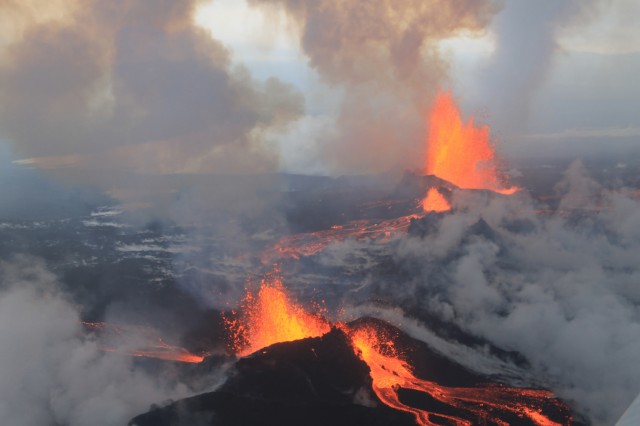The present and future of Iceland’s volcanic eruption
Ars Technica » Scientific Method 2014-09-07
The Bárðarbunga (or Bardarbunga) volcano has erupted, evoking memories of the 2010 Icelandic ash cloud that caused chaos across European and North American air routes.
What has been happening?
The ice-covered Bárðarbunga volcano has a magma chamber beneath it, and measurements indicate that magma from this chamber has been escaping into a vertical underground crack. In total, the magma has migrated some 40 km northeast of the chamber. We call this process a dyke intrusion. Escape of magma from the chamber has removed support from the chamber roof, which has collapsed to trigger earthquakes in the area.
At the far northeast tip of the dyke intrusion, the magma managed to find a route to the surface on August 29, producing a small eruption at the Holuhraun lava field. After a pause, a larger eruption started in the same place on August 31—that eruption continues at the time of writing. Both of these events occurred along an ancient fissure that had erupted in 1797. So it looks like the magma in the new dyke intrusion met the old and cold 1797 dyke intrusion and followed its path to the surface. Had this not happened, the new dyke intrusion might have kept moving to the northeast.
Read 14 remaining paragraphs | Comments
